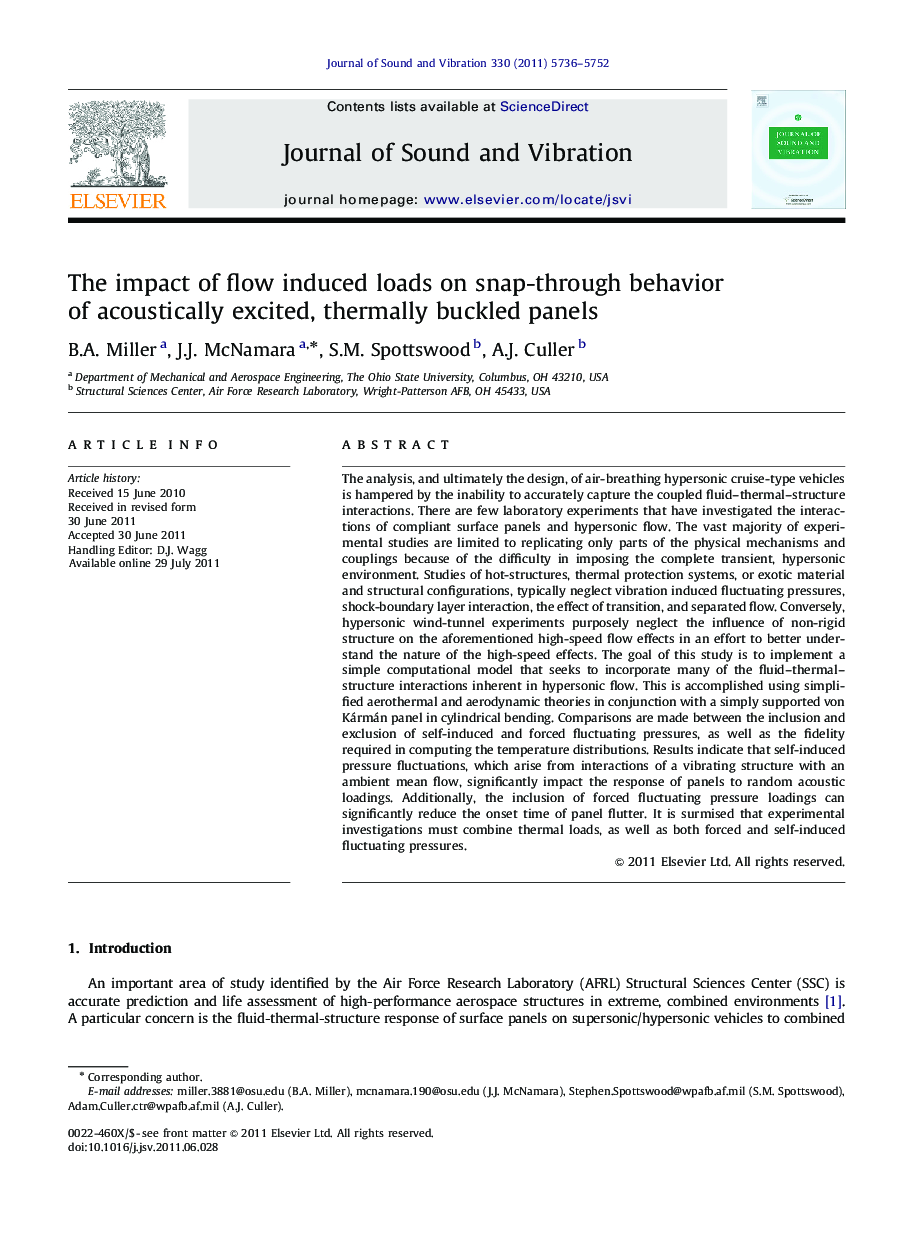| کد مقاله | کد نشریه | سال انتشار | مقاله انگلیسی | نسخه تمام متن |
|---|---|---|---|---|
| 288388 | 509620 | 2011 | 17 صفحه PDF | دانلود رایگان |

The analysis, and ultimately the design, of air-breathing hypersonic cruise-type vehicles is hampered by the inability to accurately capture the coupled fluid–thermal–structure interactions. There are few laboratory experiments that have investigated the interactions of compliant surface panels and hypersonic flow. The vast majority of experimental studies are limited to replicating only parts of the physical mechanisms and couplings because of the difficulty in imposing the complete transient, hypersonic environment. Studies of hot-structures, thermal protection systems, or exotic material and structural configurations, typically neglect vibration induced fluctuating pressures, shock-boundary layer interaction, the effect of transition, and separated flow. Conversely, hypersonic wind-tunnel experiments purposely neglect the influence of non-rigid structure on the aforementioned high-speed flow effects in an effort to better understand the nature of the high-speed effects. The goal of this study is to implement a simple computational model that seeks to incorporate many of the fluid–thermal–structure interactions inherent in hypersonic flow. This is accomplished using simplified aerothermal and aerodynamic theories in conjunction with a simply supported von Kármán panel in cylindrical bending. Comparisons are made between the inclusion and exclusion of self-induced and forced fluctuating pressures, as well as the fidelity required in computing the temperature distributions. Results indicate that self-induced pressure fluctuations, which arise from interactions of a vibrating structure with an ambient mean flow, significantly impact the response of panels to random acoustic loadings. Additionally, the inclusion of forced fluctuating pressure loadings can significantly reduce the onset time of panel flutter. It is surmised that experimental investigations must combine thermal loads, as well as both forced and self-induced fluctuating pressures.
► We modeled a skin panel in hypersonic flow for aerothermoelastic analysis.
► A computational model with temperature, flow and acoustic effects was used.
► Self-induced pressure effects greatly impact panel response to acoustic loads.
► Inclusion of acoustic effects may significantly alter flutter onset time.
Journal: Journal of Sound and Vibration - Volume 330, Issue 23, 7 November 2011, Pages 5736–5752